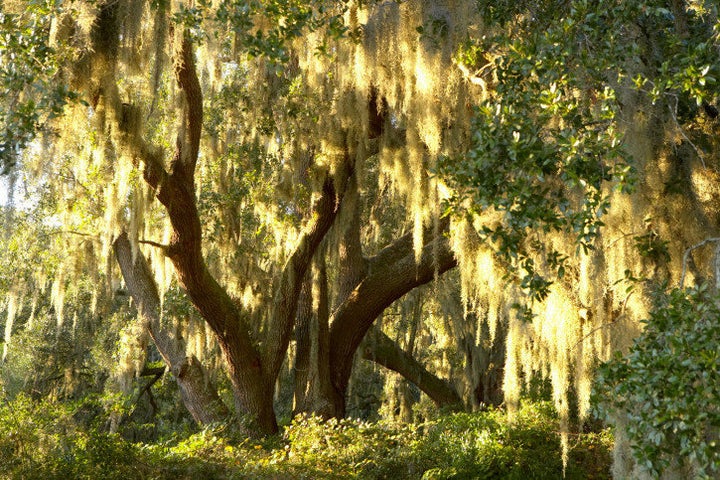
In "Avatar," humans mine a lush moon inhabited by blue-skinned extraterrestrials, the Na'vi, who live in harmony with nature. Human military forces destroy their habitat despite objections that it could affect the bio-network connecting its organisms. On the eve of the big battle, the protagonist Jake communicates via a neural connection with the Tree of Souls, which intercedes on behalf of the Na'vi.
The movie suggests that we don't understand the conscious nature of the life that surrounds us.
Although I saw the movie three times, I still cringe whenever someone tells me that a plant has consciousness. As a biologist, I can accept that consciousness exists in cats, dogs and other animals with sophisticated brains. Studies show that dogs have a level of intelligence -- and consciousness -- on par with a two- or three-year-old human child. In fact, in 1981, I and Harvard psychologist B.F. Skinner published a paper in Science showing that even pigeons were capable of certain aspects of self-awareness. But a plant or a tree? To consider the possibility seemed absurd -- until the other day.
My kitchen merges into a conservatory, a mini-rainforest with palms and ferns. While having breakfast, I looked up at one of my prize specimens, a Queen Sago tree. For the last several months I'd been watching it send up new fronds, which, since the winter solstice, have been repositioning themselves towards the shifting sun. During that time I also watched it respond to an injury to its trunk by sending out air-roots in search of new soil to re-root itself. It was a clever life-form, but clearly not conscious in any known biological way.
Then I remembered the episode of "Star Trek" called "Wink of an Eye." In this episode, Captain Kirk beams down to a planet and finds a beautiful but empty metropolis. The only trace of life is the mysterious buzzing of unseen insects. When he returns to the ship, the crew continues to hear the same strange buzzing sound. Suddenly, Kirk notices that the movements of the crew slow down to a stop, as if time itself were being manipulated. A beautiful woman appears and explains to Kirk that the bridge crew hasn't slowed down, but rather, he has been sped up, having been matched to the Scalosians' "hyper-accelerated" physical existence. Back in real time, Spock and Dr. McCoy figure out that the strange buzzing is the hyper-accelerated conversations of aliens that exist outside normal physics.
We think of time -- and thus consciousness -- in human terms. In my mind, I could easily accelerate the plant's behavior like a botanist does with time-lapse photography. The feathery creature, there in my conservatory, responded to the environment much like a primitive invertebrate. But there was more to it than that. We think time is an object, an invisible matrix that ticks away regardless of whether there are any objects or life. Not so, says biocentrism. Time isn't an object or thing; it's a biological concept, the way life relates to physical reality. It only exists relative to the observer.
Consider your own consciousness. Without your eyes, ears or other sense organs, you would still be able to experience consciousness, albeit in a radically different form. Even without thoughts, you would still be conscious, although the image of a person or tree would have no meaning. Indeed, you wouldn't be able to discern objects from each other, but rather would visually experience the world as a kaleidoscope of changing colors.
Like us, plants possess receptors, microtubules and sophisticated intercellular systems that likely facilitate a degree of spatio-temporal consciousness. Instead of generating a pattern of colors, the particles of light bouncing off a plant produce a pattern of energy molecules -- sugar -- in the chlorophyll in its stems and leaves. Light-stimulating chemical reactions in one leaf cause a chain reaction of signals to the entire organism via vascular bundles.
Neurobiologists have discovered that plants also have rudimentary neural nets and the capacity for primary perceptions. Indeed, the sundew plant (Drosera) will grasp at a fly with incredible accuracy -- much better than you can do a fly-swatter. Some plants even know when ants are coming towards them to steal their nectar and have mechanisms to close up when they approach. Scientists at Cornell University discovered that when a hornworm starts eating sagebrush (Artemisia tridentata), the wounded plant will send out a blast of scent that warns surrounding plants -- in the case of the study, wild tobacco (Nicotiana attenuata) −- that trouble is on its way. Those plants, in turn, prepare chemical defenses that send the hungry critters in the opposite direction. Andre Kessler, the lead researcher, called this "priming its defense response." "This could be a crucial mechanism of plant-plant communication," he said.
As I sat in the kitchen that day, the early-morning sun slanted down through the skylights, throwing the entire room into gleaming brightness. The Queen Sago tree and I were both "happy" the sun was out.
***
Robert Lanza, M.D. has published extensively in leading scientific journals and has over two dozen books, including "Biocentrism," which lays out his theory of everything. You can learn more about his work by visiting his website at www.robertlanza.com.